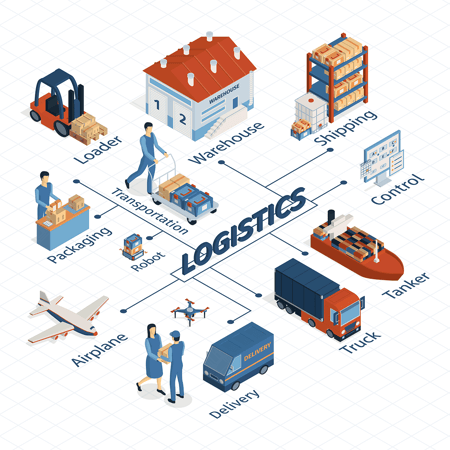“We need to completely disrupt the global supply chain in the 2nd year of the business simulation to see how our high potential leaders react and change their approach moving forward,” was the request from our client looking to throw a sophisticated “wobbler” at the group of 32 global leaders.
see how our high potential leaders react and change their approach moving forward,” was the request from our client looking to throw a sophisticated “wobbler” at the group of 32 global leaders.
After a good conversation and the chance to work with their supply chain team, we figured out an ingenious way to create a scenario in the simulation that will lift up their Business Acumen skills in the area of creating competitive advantage through enhanced supply chain strategies. This blog shares some interesting insights into the research and some key takeaways for dealing with a supply chain that will never be the same as we once knew it.
Using Business Acumen to Reimage a New Supply Chain
Over the past three years, worldwide supply chains have undergone tremendous change. The COVID-19 pandemic caused lockdowns in India, China, Taiwan, and other manufacturing regions prompting global shortages of high-demand goods such as semi-conductor chips. It also accelerated a radical change in consumer demand for which a scalable global supply chain did not even exist.
Yet, here we are in late July 2022 and the pandemic rages on (even though you wouldn’t know it from the number of unmasked people out and about pretending it doesn’t exist). However, that is not even the biggest problem right now as geopolitical issues and economic issues like inflation have put already fragile supply chains under more pressure and risk. The global shortage of goods caused by a portfolio of events has also resulted in dissatisfaction and dissent towards governments, creating political instabilities with both short-term and long-term impacts.
The question now in the minds of every business and supply chain leader is this: what should we do now? To me, the answers are contained in having strong Business Acumen skills throughout your organization so that the right decisions are made at the right times.
Here are 3 things you can use Business Acumen skills to do to decrease the exposure and risks from a catastrophic supply chain implosion and create a competitive advantage that can differentiate your company through a proactive and innovative supply chain strategy
1) Reimage your supply chain by taking advantage of opportunities and minimizing risks
As your company starts thinking about the supply chains of 2023 and beyond, you need to start thinking about readiness and preparation for what’s next. As of July, 2022, the supply chains have been disrupted and the easy answer is to blame the pandemic. Let me challenge that right here and right now. I think the pandemic only exposed the vulnerability of the supply chain and not the complete disruption. If you are being honest with yourself, how ready were you? Most businesses, from small to large corporations, failed to prepare for a major disruption to their supply chain. In doing some research, I found a very interesting whitepaper by EY highlighting a survey of 200 senior-level supply chain executives in late 2020, only 2% of companies believed that they were prepared for an event like the Covid-19 pandemic. It's a fascinating read!
While there may or may not be another global pandemic of the same scale, the future always holds some kind of disruption. You must take important lessons from the pandemic and focus on building agility and resiliency in your supply chain networks. Those who can reimagine the supply chain of the future will be able to create a competitive advantage. From a Business Acumen perspective, what will it cost and how do you fund it?
2) The Digitization of Your Supply Chain
Like many other functions (Commercial, Manufacturing, Finance, HR, etc.) the adoption of digital tools for the Supply Chain is a critical priority for many businesses. What I have learned from deep conversations with our Advantexe clients is that Executives are looking at creating true competitive advantage and the ability to accelerate the delivery of the value proposition by digitizing the supply chain. Digital transformation can assist in achieving simplicity, reliability, and resilience in supply chains.
While the benefits of digital transformation are clear, too many organizations don’t have the skills and capabilities to execute it. In order to set yourself up for success, you need a comprehensive assessment of all aspects of your supply chain, a clear management vision of what you expect from digitization, and the skills and tools to execute a digital transformation roadmap.
3) Transparency across the supply chain
Your customers are already demanding it! The expectation is complete transparency and access to information across the supply chain. The use of digital technologies to track and have traceability will be another way to create competitive advantage through a supply chain strategy. These traceability technologies will allow organizations to track goods at every point along the supply chain journey and get precise information about the origin, practices, processes, and other aspects in detail. This information helps companies identify disruptions, recognize strategic opportunities, respond to changes in demand faster and reduce the risk of disruption. Implementing traceability improves customer trust and gives businesses the ability to certify sustainability across the supply chain.




